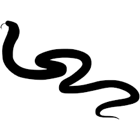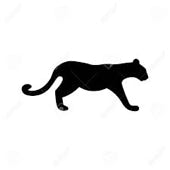

Sources: Wikipedia entry for Mayna Treanor Avent Studio, National Register of Historic Places Filing, Avent family memories, and others.
Built around 1850 by the Ownby Family, it was constructed as a one-room cabin from poplar logs. The building has a gable roof, an exterior cobblestone and concrete chimney and a stone foundation. The main cabin is rectangular 16 feet (4.9 m) by 23.5 feet (7.2 m). The logs are half dovetail notched with both mud and concrete chinking. Originally, there was only a single window and door in the cabin and no stone fireplace. Two of the entrance doors are vertical board design and date to about 1910. On the rear or east is a shed roof wing with vertical board siding that contains a kitchen and an enclosed porch.
It was purchased in 1918 by Frank Avent, husband of Mayna Avent, for $200 from the Ownby family and remodeled into its present appearance in 1926. By 1927, their son James held title to the land. Ownership of the cabin and its 18.5 acres (7.5 hectares) of land was transferred to the National Park Service in 1932. A lease was given to the son of Frank and Mayna Avent, James Avent and his wife Jeannette and remained with the Avent family until its expiration in 1992. Significant alternations were made in 1972, some of which were removed in 1992-1993 when the Avent lease expired to restore it to be closer to its appearance when it was used as a studio.
It is the only authentic Appalachian Settler cabin that remains intact along Jake's Creek in its original location.
Mayna Avent began using the cabin as a studio in 1919 and continued to do so for over 20 years. Several alterations to the structure were made to make it more conducive for studio use. For example, to improve illumination, two large openings were created by: a window at the southwest elevation, and at the southeast wall, a pane glassed door providing access to the porch. A stone fireplace and stone chimney were constructed at the northeast wall.
During this period, the extended Avent family would visit the cabin during the summer. The sole source of heat, a stone fireplace, was not always sufficient to heat it during the winter months. The glass windows and doors, while wonderful for lighting during the warmer months, could make the interior rather cold during the cooler months.
Mayna’s son James was based in China working for Standard Oil and he and his family would spend time there during their home leave.
The Second World War with all its rationing and war-time obligations made travel to the Cabin more rare. After the war, care of the Cabin passed to Mayna Treanor Avent’s grandchildren, children of her son James and in particular to the family of Mayna Avent MacKinnon (later Mayna Avent Nance). Initially it remained a summer retreat of the MacKinnon’s but after the Park renewed the lease in 1972 and permitted modest modifications, the kitchen area was enhanced with a propane gas stove-oven and a propane gas refrigerator and two wood burning stoves were added.
The original thatch roof was replaced by tar-paper and finally the aluminum one you see today.
The sparse amenities you see today are not what the Cabin was during its prime period of use. It was appointed with simple but comfortable beds, chairs, and tables. There were wall hangings, pictures, and books - and a spinning wheel. The spinning wheel had been in the Cabin for decades when, by chance, a repairman who was working on the Cabin, noticed it - it had at one time belonged to his mother. The Avent family gave it to him when, years later after he passed away, his family gave it back to reside in the Cabin. It remained there until 1992 when the lease expired.
Apart from the spring water faucet and sink in the kitchen, there was never any indoor plumbing. An outdoor latrine was about 100 feet north which was a simply a seat over a pit - we called it the Throne! Remains of the throne are still visible today.
The Cabin never had electricity (unlike the Cabins in the main Elkmont Club Town settlement). All lighting was provided by candles or lanterns - either kerosene or Colman gas. All lighting fuel, like all the food, had to be carried in via the path you came down across Jake’s creek and up to the Cabin. The only consumable food or drink we did not have to carry in was the spring water. The wood burning stoves, one of which can still be seen today, provided much needed heat in the winter and all logs to fuel it was sourced from nearby dead trees (by park regulations).
In 1992, the Avent Cabin was returned to the National Park along with the other cabins in the Elkmont Club Town settlement. For some time, it was unclear what would happen as the National Park had let other historic structures return to the elements. Mayna Avent Nance, granddaughter of Mayna Treanor Avent, successfully petitioned for the Cabin to be listed on the National Register of Historic Places thus allowing for its preservation. The Cabin is now in the care of the National Park and maintained by Friends of the Smokies under the direction of the Park. Friends of the Smokies raises its funds from donations, grants, and membership subscriptions and its mission is to preserve historic structures, protect wildlife and conserve the Park’s natural resources.
The cabin’s coordinates are latitude 35°38′16.68″N and longitude 83°35′9.86″W.
Should you wish to visit the Cabin and environs, please keep in mind that it’s deep within a narrow valley and cell phone signals, and sometimes even GPS, will not reach you. A hardcopy map and compass is recommended. During the autumn, winter, and into the spring, the sun will set behind the mountains before it does at lower and higher elevations. Don’t be like the Avent family when we’d sometimes forget a flashlight and have to carefully walk if not crawl (sic) our way back to the safety of the Cabin at night across the creek after a provisions run to Gatlinburg. There are all the animals, insects, and plants to be expected in the remote parts of Smokies. It is generally cooler than at lower elevations and it will snow earlier and stay longer as well.
Bears, snakes, and mice can claim the Cabin as in their territory now. If you encounter any, treat them with respect, give them a wide berth, and leave them be. This is their home, not ours. Mayna’s son, James, would say that 100 years ago, at night in the distance, you may hear the roar of a mountain lion which he likened to the scream of a woman far away; listen carefully, have the mountain lions returned?
So travel with care.
The cabin is located approximately 1 mile (1.6 km) south of Elkmont, Tennessee on the west side of Jake's Creek Valley. It is accessible on the Jake's Creek Trail which passes approximately 200 yards (180 m) to the east of the cabin. A footpath winds down to Jake's Creek crossing over traces of the old Elkmont Road, crosses over the Creek by a foot-log bridge, and up the ridge where the cabin is located on a steep bluff.
At an altitude of 2,700 feet (820 m), the cabin lies on a steep side of a ridge overlooking Jake's Creek Valley. Small areas of the forest were cleared by the Ownby family for apple orchards, potato and corn fields and for bee-keeping. Stone retaining walls, some of which can still be seen, were constructed to support the leveling of the topology for agricultural use.
Legend has it that if you left 50 cents in a mason jar in the laurel thicket down by the creek and returned the next day, it would be full of moonshine. One wonders if that is still the case?
The Avent Cabin Spring is located at latitude 35°38'20.95"N and longitude 83°35'12.18" W.
Other Settler Cabin Sites
A short distance further south from the Avent Studio, through thick forest undergrowth, are two other authentic Appalachian Settler Cabin Sites. Though only the foundations and chimneys remain, they offer a hint of the community of settlers that once existed in the 19th and early 20th centuries along Jake’s Creek.
The Mary Avent Adams Cabin Site is located at latitude 35°38'12.5"N longitude 83°35'10.1"W




The Cabin in 2022
The Thinking Rock.
A short distance above the Cabin beneath a pine tree is a place for reflection and watching nature. How dare you think wine and whisky were consumed there as alcohol was not permitted in National Parks!
The Bear Tree
Between the Cabin and the drop-off to Jake’s Creek is the Bear Tree. Now just a trunk after a storm fell her, she was a territorial marker for bears. Claw marks, bear fur, and dripping sap could often been seen.
Sam Cook Cabin Site, 2022